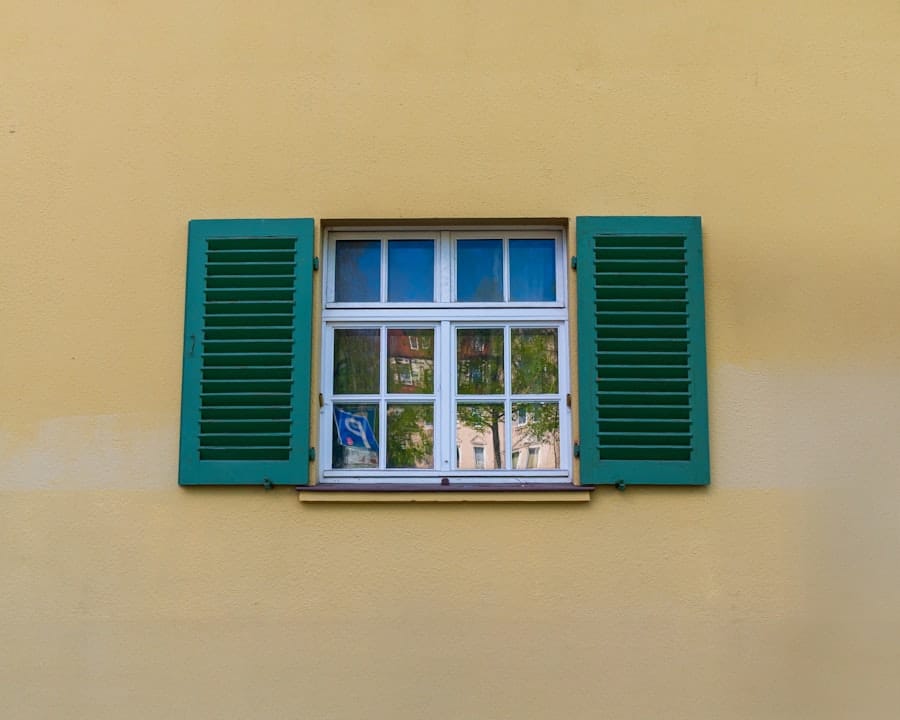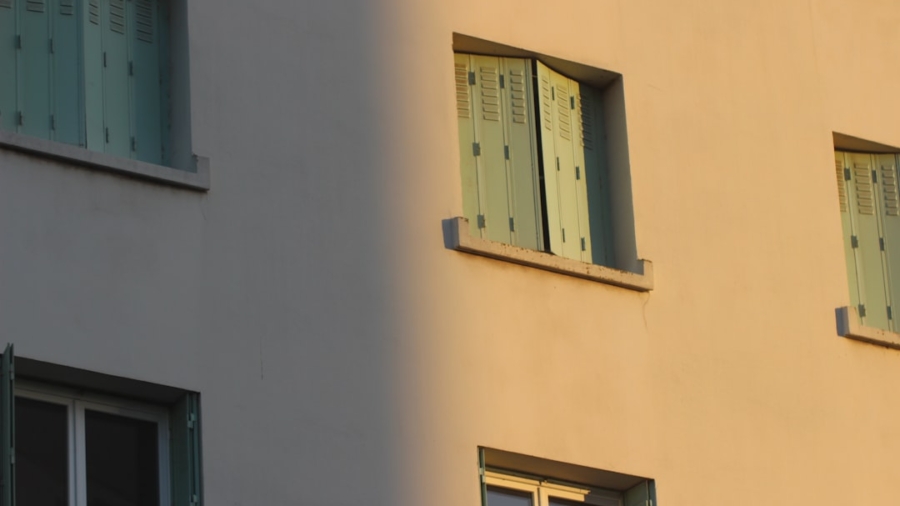Smart windows represent a significant advancement in architectural technology, merging aesthetics with functionality to create environments that are not only visually appealing but also energy-efficient. These innovative windows utilize advanced materials and technologies to control the amount of light and heat that enters a building, thereby enhancing comfort and reducing energy consumption. The concept of smart windows is rooted in the desire to create spaces that respond dynamically to their surroundings, offering a solution to the challenges posed by traditional glazing methods.
The evolution of smart windows can be traced back to the growing awareness of environmental sustainability and the need for energy-efficient building solutions. As urbanization continues to rise, so does the demand for innovative technologies that can help mitigate the impact of climate change. Smart windows are at the forefront of this movement, providing a means to optimize natural light while minimizing reliance on artificial lighting and heating systems.
By integrating these windows into modern architecture, designers and builders can create spaces that are not only functional but also contribute positively to the environment.
Key Takeaways
- Smart windows are a modern innovation that can adapt to changing weather conditions and offer a range of benefits.
- They can help regulate indoor temperature, reduce energy costs, and enhance privacy and security.
- There are different types of smart windows, including electrochromic, thermochromic, and photochromic windows.
- Smart windows are energy-efficient and can contribute to sustainable living by reducing the reliance on heating and cooling systems.
- While the initial cost and installation of smart windows may be higher, the long-term benefits and energy savings make them a worthwhile investment for the future.
How Smart Windows Adapt to Weather Conditions
Smart windows employ various technologies to adapt to changing weather conditions, ensuring optimal indoor comfort throughout the year. One of the most common methods is electrochromic technology, which allows the glass to change its tint in response to electrical signals. When sunlight hits the window, an electrical current can be applied to darken the glass, reducing glare and heat gain.
Conversely, when the sun sets or clouds cover the sky, the glass can return to its clear state, allowing natural light to flood the space without excessive heat. Another approach involves thermochromic materials that react to temperature changes. These materials can automatically adjust their tint based on the ambient temperature, providing passive solar control.
For instance, during hot summer days, the windows may darken to block out excessive heat, while in cooler months, they remain clear to allow sunlight to warm the interior. This adaptability not only enhances comfort but also contributes to energy savings by reducing the need for air conditioning and heating.
Benefits of Smart Windows

The benefits of smart windows extend beyond mere aesthetics; they encompass a wide range of practical advantages that make them an attractive option for both residential and commercial buildings. One of the primary benefits is energy efficiency. By regulating heat and light entry, smart windows can significantly reduce reliance on heating and cooling systems, leading to lower energy bills.
This is particularly important in regions with extreme weather conditions, where heating and cooling costs can be substantial. In addition to energy savings, smart windows also enhance occupant comfort. By minimizing glare and maintaining a consistent indoor temperature, these windows create a more pleasant living or working environment.
Furthermore, they can improve privacy without sacrificing natural light. For example, some smart window technologies allow for adjustable opacity, enabling users to control visibility from outside while still enjoying daylight indoors. This versatility makes smart windows an appealing choice for various applications, from residential homes to high-rise office buildings.
Types of Smart Windows
Smart windows come in several varieties, each utilizing different technologies to achieve their functionality. Electrochromic windows are among the most well-known types; they change tint in response to an electrical charge, allowing users to control light and heat levels effectively. These windows are often used in commercial buildings where large expanses of glass are common, as they can be integrated into building management systems for automated control.
Another type is photochromic windows, which react to sunlight by darkening automatically. Unlike electrochromic windows, photochromic glass does not require an external power source; instead, it relies on UV radiation from sunlight.
However, their response time may not be as quick or adjustable as that of electrochromic options. Thermochromic windows represent another category, changing their tint based on temperature rather than light exposure. These windows are particularly effective in climates with significant temperature fluctuations, as they can help maintain a comfortable indoor environment without relying on mechanical systems.
Additionally, there are also liquid crystal windows that can switch between transparent and opaque states with an electrical current, providing instant privacy when needed.
Energy Efficiency of Smart Windows
The energy efficiency of smart windows is one of their most compelling features, making them a key component in sustainable building design. By controlling solar heat gain and loss, these windows can significantly reduce energy consumption associated with heating and cooling systems. For instance, studies have shown that buildings equipped with smart window technology can achieve energy savings of up to 30% compared to those with traditional glazing.
In addition to reducing energy costs for heating and cooling, smart windows also contribute to overall building performance by enhancing insulation properties. Many smart window technologies incorporate low-emissivity (Low-E) coatings that reflect infrared light while allowing visible light to pass through. This dual functionality helps maintain indoor temperatures while minimizing heat transfer through the glass.
Moreover, smart windows can play a crucial role in demand response strategies within smart grids. By integrating with building management systems, these windows can adjust their tint based on real-time energy prices or grid demand signals.
For example, during peak energy usage times when electricity costs are high, smart windows can darken automatically to reduce cooling loads, thereby alleviating stress on the grid and contributing to overall energy conservation efforts.
Cost and Installation of Smart Windows

The initial cost of smart windows can be higher than traditional glazing options due to the advanced materials and technologies involved. Prices vary widely depending on the type of smart window technology used and the specific features desired. For instance, electrochromic windows tend to be more expensive than photochromic or thermochromic options due to their complexity and integration capabilities.
On average, homeowners might expect to pay anywhere from $50 to $100 per square foot for electrochromic glass installations. Installation costs also play a significant role in the overall investment required for smart windows. Retrofitting existing buildings with smart window technology may involve additional expenses related to structural modifications or electrical work needed for integration into building management systems.
However, many manufacturers offer comprehensive installation services that can streamline this process and ensure optimal performance. Despite the higher upfront costs, many property owners find that the long-term savings on energy bills justify the investment in smart window technology. Additionally, various incentives and rebates may be available at local or federal levels for energy-efficient upgrades, further offsetting initial expenses.
As awareness of sustainability grows and technology advances continue to drive down costs, it is likely that smart windows will become increasingly accessible for a broader range of consumers.
Maintenance and Longevity of Smart Windows
Smart windows are designed with durability in mind; however, their maintenance requirements can vary depending on the specific technology employed. Generally speaking, these windows require less maintenance than traditional glazing options due to their advanced coatings and materials that resist dirt accumulation and degradation over time. For instance, electrochromic windows typically have a lifespan of 20 years or more when properly maintained.
Regular cleaning is essential for maintaining optimal performance; however, it is crucial to use non-abrasive cleaning solutions that will not damage the sensitive coatings on smart glass surfaces. Most manufacturers provide guidelines on appropriate cleaning methods and products to ensure longevity without compromising functionality. In terms of technological longevity, advancements in materials science continue to enhance the durability and performance of smart window technologies.
Manufacturers are increasingly focusing on developing products that withstand environmental stressors such as UV radiation and extreme temperatures without losing effectiveness over time. As a result, property owners can expect their investment in smart window technology to yield long-term benefits both in terms of performance and aesthetic appeal.
Future of Smart Windows Technology
The future of smart window technology appears promising as ongoing research and development efforts aim to enhance functionality while reducing costs. Innovations such as self-tinting glass that responds not only to sunlight but also to indoor lighting conditions are being explored. This could lead to even greater energy savings by optimizing light levels based on occupancy patterns within a space.
Furthermore, integration with smart home systems is expected to become more prevalent as consumers seek seamless control over their living environments. Imagine a scenario where your smart window automatically adjusts its tint based on your preferences or even syncs with your thermostat settings for optimal comfort throughout the day. As sustainability becomes an increasingly critical focus in architecture and construction practices worldwide, smart windows will likely play a pivotal role in achieving net-zero energy goals for buildings.
With advancements in nanotechnology and materials science paving the way for more efficient designs, we may soon see smart windows that not only regulate light and heat but also generate energy through photovoltaic capabilities embedded within the glass itself. In conclusion, as technology continues to evolve and consumer demand for sustainable solutions grows, smart windows are poised to become an integral part of modern architecture—transforming how we interact with our built environments while contributing positively toward a more sustainable future.
In the realm of innovative technologies, smart windows that adapt to weather conditions are gaining significant attention for their potential to enhance energy efficiency and comfort in buildings. These advanced windows can automatically adjust their tint based on the intensity of sunlight, thereby reducing the need for artificial cooling and heating. For those interested in exploring other cutting-edge technologies, an article on smartwatches that allow you to view pictures offers insights into the latest advancements in wearable tech. This piece highlights how smartwatches are evolving beyond basic functionalities to incorporate features that enhance user experience, much like how smart windows are revolutionizing building design.
FAQs
What are smart windows that adapt to weather conditions?
Smart windows that adapt to weather conditions are windows equipped with technology that allows them to automatically adjust their tint or transparency in response to changing weather conditions such as sunlight, temperature, and precipitation.
How do smart windows that adapt to weather conditions work?
Smart windows use various technologies such as electrochromic, thermochromic, or photochromic materials to change their tint or transparency in response to external stimuli. For example, electrochromic windows use an electrical voltage to control the amount of light and heat that passes through the window.
What are the benefits of smart windows that adapt to weather conditions?
The benefits of smart windows that adapt to weather conditions include improved energy efficiency, reduced glare, better control of indoor temperature, and enhanced comfort for building occupants. These windows can also help reduce the reliance on artificial lighting and heating, leading to potential cost savings and environmental benefits.
Are there any drawbacks to smart windows that adapt to weather conditions?
Some potential drawbacks of smart windows include higher initial costs compared to traditional windows, as well as the need for proper installation and maintenance. Additionally, the performance of smart windows may be affected by factors such as the angle of sunlight and the surrounding environment.
Where can smart windows that adapt to weather conditions be used?
Smart windows that adapt to weather conditions can be used in various settings, including residential buildings, commercial offices, and automotive applications. They are particularly well-suited for locations with varying weather patterns and where energy efficiency is a priority.

